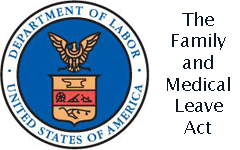Sometimes employers do win in court, even if they’re in technical violation of the law.
One employer’s FMLA violation wasn’t enough to lose a lawsuit. Many claims involving the Family and Medical Leave Act are tied to the timeliness of notices.
The regulations are clear and specific for the maximum and minimum amount of time to send an employee notices relating to their FMLA claim. Employees have their own time requirements to perform such acts as returning medical certifications. This does not mean that all is lost for either party when a deadline is missed, if the required act is completed.
No harm, no foul – even with a job change
Technical violations of the FMLA don’t create an automatic win for an employee. The employee must have suffered harm related to the technical violation of the employer involving some required act.
Recently the First U..S. Circuit Court of Appeals, based in Boston, gave an employer a victory despite the employer’s flawed and late-delivered notice forms. In Bellone v. Southwick-Tolland Regional School District, the appellate court affirmed the District Court ruling that despite technical violations by the employer wherein they failed to deliver proper notices or use the right forms, the employee suffered no harm and therefore his claim failed.
The employee was returned to work to a position that was similar to one held prior to their absence, but it wasn’t the same position. The employee, who wasn’t notified of the employer’s right to the similar-vs-same job option far enough in advance, viewed the new position as a demotion.
A demotion upon return to work would be illegal under FMLA regulations. The Court didn’t see it that way since the pay and benefits were the same, and forgave the employer the flawed notice because they otherwise complied with the substance of the Family and Medical Leave Act.
The most striking thing about this case is that the employee felt cheated – then sued — because his new job came as a nasty surprise, late in the game. Disappointed by what he saw as a demotion in the general pecking order, he seized on the flawed notice as the ticket to getting his old job back. This only illustrates again how good communication with employees on FMLA leave goes a long way in reducing trips to the courthouse.
Take away lessons
This makes me wonder if some of the FMLA cases that regularly clog the courts could not be avoided if there were more systematized communication to employees. A good take away lesson is to make sure notices and follow-ups go out automatically, which isn’t hard to do if your department happens to use workforce management software with FMLA features included. If you don’t have this, you’ll need to set up automatic reminder schedules on your calendar for each new FMLA claim that crosses your desk.
A second lesson is that even if you don’t have on hand the exact form, it is better to send something than nada. With everything they’re already tasked with, busy HR generalists simply do not have the time to check to see if they have the most current version of a required form, or if it reflects newly issued regulations.
In the Bellone case, the school district dodged a bullet. If there had been actual harm to the employee, the employer would have faced losing a judgment or else expensive settlement costs.
Again, software that includes electronic HR forms can save you this headache, so it’s one option to consider if the anxiety of all this is depressing you.
This originally appeared on the GeniusHR blog.
